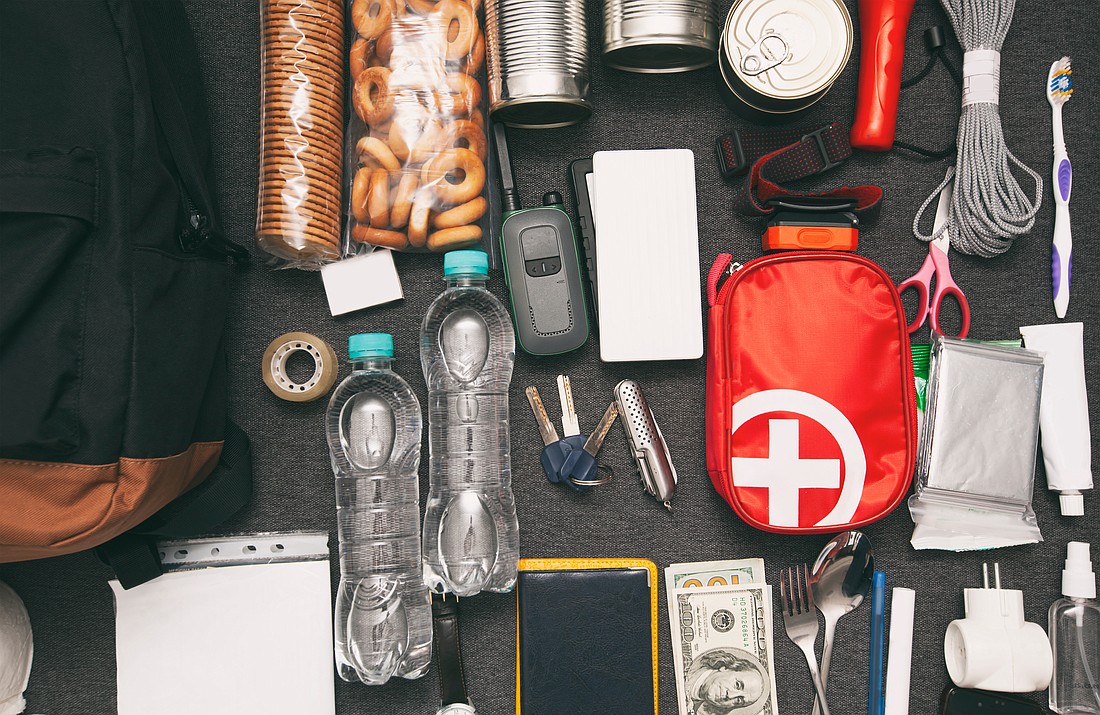- January 14, 2025
-
-
Loading

Loading

As prices continue to increase, people will have to pay more for everything, including storm supplies.
“Purchasing perishable and non-perishable supplies to successfully weather a storm comes with additional expenses that can impact an already tight budget,” said Brenda Marty-Jimenez, one of several UF/IFAS Extension agents throughout the state specializing in family and consumer sciences. “It can be challenging to find the time and resources necessary to feed our families nutritious food and stock up on recommended supplies.”
Thinking ahead is key, she said.
“There are plenty of cost-saving measures you can adopt now that will save you money over time, such as creating hurricane menus and shopping for what you can ahead of time,” Marty-Jimenez said.
Here, Marty-Jimenez offers five strategies to keep disaster preparedness costs under control.
1. Planning saves time and money.
Eating healthy, managing food dollars and cooking at a lower price tag require meal planning, a key step to managing resources. Before heading to the store, set up a grocery list that will yield multiple recipes and falls within your budget. Be prepared that substitutions may be necessary; because of ongoing supply chain challenges, stores may not have all items in stock. Keep a copy of your disaster menu plan stored with your disaster supplies. Some find it useful to take a photo of their grocery list to keep in their smartphone in case the list gets misplaced — especially during stressful moments. Before heading to the register, double-check your grocery list to make sure you have all the items you need inside your cart. A second trip to the grocery store costs time and extra gas money.
2. Remember MyPlate.
When planning meals, be sure to include plenty of fruits and vegetables, whole grains, low-fat dairy and lean proteins to stock your pantry with disaster supplies. Don’t buy lots of perishable food if you cannot eat it in time or freeze it before it expires; and remember, frozen food has a time limit if your home loses power.
3. Check your supplies.
It is tempting to put off shopping and delay the expense of purchasing supplies when money is tight. Spreading your costs over time, if possible, can be the most efficient management strategy. Track spending like you track a storm: One week, plan to purchase non-perishable food supplies and bottled water — and, remember, these items are generally not taxable. The next week, buy paper products; perhaps followed by batteries, flashlights and lanterns. Be prepared to make alternative purchasing decisions, as stocked items may be low or limited because of supply chain issues. Make a spending plan that includes a little money set aside each week for needed items. Remember to stock up on what you need, but don’t overbuy.
4. Take advantage of in-store specials and use coupons.
Do not buy what your family will not eat just because it is on sale or you have a coupon. Purchasing “buy one, get one free” items can save money. Cases of water are often sold at buy one, get two free during hurricane season. Coupons can be found in several places, including the newspaper, online printable coupons, weekly store flyers, manufacturer and store websites, in-store coupons and store loyalty cards. By using coupons, the dollars you save each week can add up.
5. Prepare your car.
Keep your gas tank half full during hurricane season. Plan where you will do your shopping based on where you will find the best deals and how far you will have to travel. This may take some extra research but will save you time and money in the end. You can share shopping trips with a friend, family member or co-worker. They can pick up supplies at one store for you while you purchase supplies for them at another. Travel, buy and plan in advance, while the shelves are still stocked. When the shelves are empty, you will spend more gas money driving around to find what you need. Make sure you are maintaining your gas tank at the half-full level during hurricane season. Consider joining one of the rewards programs at your local gas station. When a storm is approaching, gas lines can become long, and supplies may run out. Download a Gas availability app now such as the GasBuddy app. This may save time and money when looking for gas and supplies are running low. Turnpike tolls are often suspended when evacuation orders are active.